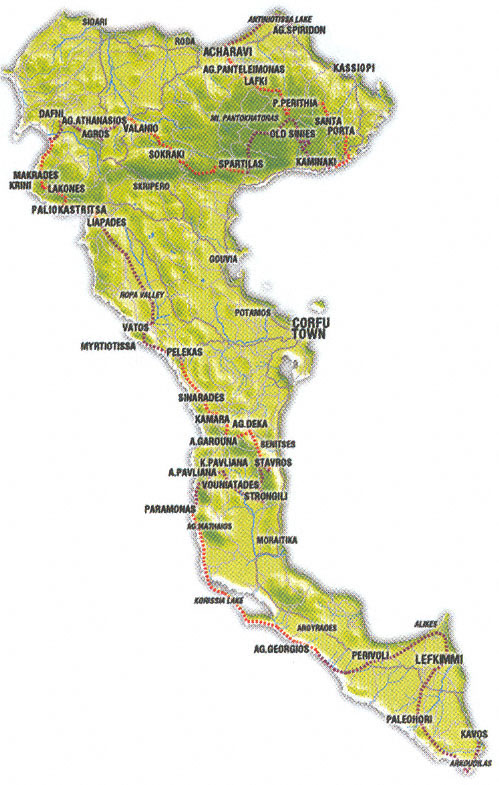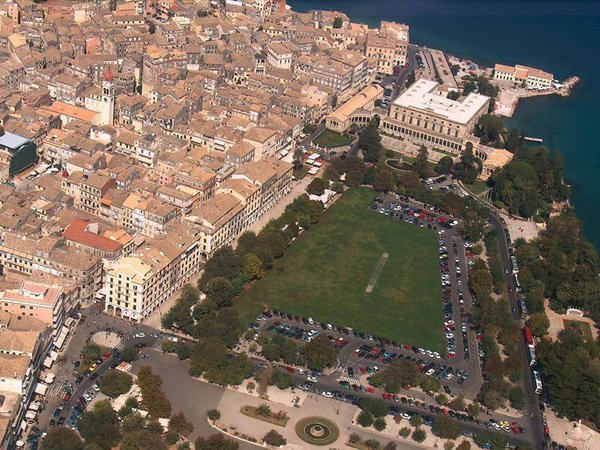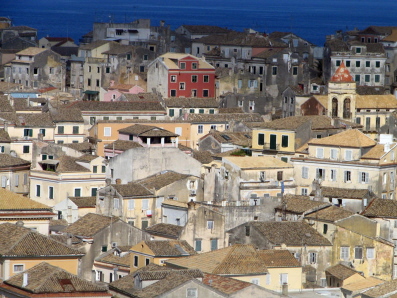| The Island | ||
|
||
|
|
||
|
Kerkyra (Corfu) is an island of the Ionian Sea with Corfu town as its capital. It belongs to the Seven islands. Its size is 634 Km2 and its population is around 120.000 inhabitants. Great built-up areas are Lefkimmi, kato Korakiana, Argirades, Agios Matheos Koinopiastes, etc. The island is washed by the Corfiot Sea on the west, and its northern part is very close to Albania. Kerkyra has the same geological composition with the opposite mainland and Albanian coasts, a fact which proves that it was detached from them after strong tectonic earthquakes. Kerkyra has an almost triangular shape with a larger northern part and a thinner southern part. It is a half mountainous island. Its main hills are Pantokratoras (914 m.), Stravoskiadi, Vigles, Tsouka, Agioi Deka. It has a few valleys, the most important one being that of Korissia. There are no big rivers. The most notable ones are the Big River (Potamos), Tyflopontikas, Messonghis, and Ermonis. Lake Korissia is also remarkable in length and width. The main ports are that of Kerkyra (Corfu town), Garitsa, Boukari, Liapades, Sidari, and Agios Georgios. There are capes in Agia Ekaterini, Capo Sidero, Agio Georgio, Kefali, Cape Bianco. There are also a few minor islands around Corfu such as the ones of Vidos (in front of the port), Agios Georgios, and Pontikonissi. The climate in Corfu is mediterannean, i.e. cool summer and mild winter. Due to the extended rainfall increased humidity is noted. In the past, the island was called Makris (Long), or Drepanos (Scythe), or Argos due to its shape. In the odes of Homer it is mentioned as the island of Phaeackes. Its current name derives from the mythical daughter of Aesopos, nymph Kerkyra. It is also called Corfu due to the two peaks (corufes) of its castle. Kerkyra is marked for its numerous and beautiful beaches. The main ones are the following: Glyfada, Palaiokastritsa, Agios Gordios, Agios Georgios Pagon, Agios Stefanos, Barbati, Kerasia, etc.
|
||
|
The Town |
||
|
|
|
|
|
Corfu town is distinguished for its Venetian architecture. There are two big fortresses in town. The old one (11th cent.) which is actually an isle connected to the town with a bridge, and the new one (15th cent.). After the area of Palaiopolis, Corfiots began to inhabit the island-fortress so as to be protected from all sorts of enemies. When the population increased, the town had to be extended beyond the fortress-castle. That is how the area where todays town stands was constructed. The buildings maintained up to our days are of the Venetian period, and have been erected by height, that is, they are high, narrow, and at such a distance from one another that only one person on horseback can go by. All streets are vertical leading to the area in front of the old fortress which was deliberately left unconstructed to be used as a battlefield. In times of danger the citizens of the town had the possibility to gather inside the castles through the mines connecting underneath the whole town and the islet Vidos across the old port. From the castles the Corfiots could control the enemy whether the latter attacked from sea or land. Today this unconstructed area is the main square of Corfu which is placed among the five biggest ones in the Balkans. Part of the square is now used as a cricket field. This square is called Spianada, either from the Italian verb splanare which means to flatten a place so as to make it a battlefield, or from the English noun esplanade which is the street or square parallel to the sea, as is in our case. In the square one can see the the palace of St Michael and George which was mainly used for ceremonies. |
||
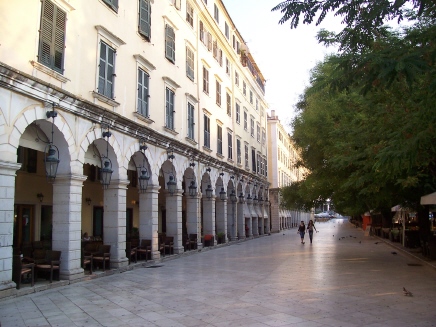 |
||
|
The French built the row of houses in front of the square, called Liston. This row resembles the one in Rue de Rivoli (across the Louvre museum) in Paris. The name Liston probably derives from the fact that in order to frequent the cafeterias of that area one had to be on the List of Noblemen. Still, the prevailing version is that List was called the wide and straight street extended in front of houses, as is the case here. |
||
|
Museums Archaeological Sites |
||
|
There are two great museums in Corfu town - the Chinese-japanese one with collections donated by a rich Corfiot, and the archaeological one which is particularly interesting. Apart from that there is Mon Repos a former residence of the governors of Corfu during the British ruling and later residence of the kings of Greece which has been renovated and is now used as a museum. This building lies in a spot of approximately 250 acres in the area of the Ancient pre-Christianic city of Corfu, the so-called Palaiopolis. A 5th cent B.C. temple is preserved there as well. The area of Kanoni all around is full of ancient findings.
|
||
|
Another famous museum is Achillion. It is situated at Gastouri village, just a few kilometres out of town. It was erected in 1896 by the empress of Austria Elizabeth- known as Sissy who loved Corfu so much that she decided to build a house there. Being aware of the Greek mythology, and having Achilles as her hero, she named the residence after him. The building is full of paintings and statues referring to the ancient times, with two statues of Achilles found in the garden, the smaller one of white marble which represents Achilles dying (with the arrow in this heel), and the larger one of bronze in which Achilles is triumphant warrior. |
||
 |
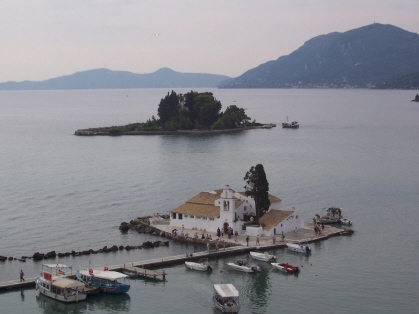 |
|
|
|
||
|
A characteristic feature of Corfu is Pontikonissi (the Mouse island). It is an islet in the Kanoni area which, in combination with the Vlaherna church, create a spectacle of unique beauty and constitute a pole of attraction for thousands of tourists every year.
|
||
|
Saint Spyridon is patron saint of the island. Its relic along with that of the Queen of Byzantium Theodora were brought to Corfu in 1456 by George Kaloheretis. The relic of saint Spyridon is found in the homonymous church, while that of Saint Theodora in the Town Cathedral. There are still a lot of churches which stand out from the ones in the rest of Greece for their deliberately small size. |
||
|
For more information on the island you can visit the sites below:
|
||
